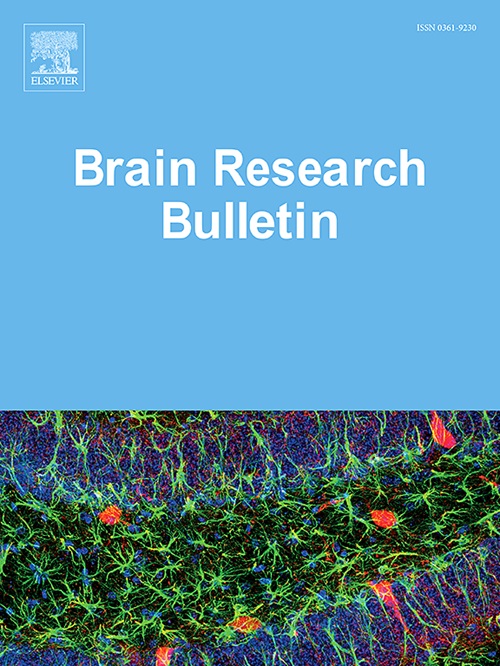Alterations in whole-brain white matter fiber networks in individuals with autism spectrum disorder after social skills training
IF 3.5
3区 医学
Q2 NEUROSCIENCES
引用次数: 0
Abstract
Social skills training (SST) has demonstrated efficacy in improving social deficits in individuals with autism spectrum disorder (ASD), but the underlying neural mechanisms remain unclear. This study investigated alterations in whole-brain white matter network topology after SST in ASD individuals and explored potential correlation with improvements in social interaction deficits. 38 ASD patients aged 12 - 30 years were recruited, including 19 who completed magnetic resonance imaging (MRI) scans and social responsiveness scale (SRS) assessments at both baseline and the endpoint of a 14-week SST (training group) and 19 age-, sex-, and IQ-matched patients who underwent MRI scans and SRS assessment at the same time points but did not receive SST (control group). White matter connectivity matrices were constructed using diffusion tensor imaging (DTI), and graph theory analysis was used to assess global and nodal network properties. Paired t-tests and independent-samples t-tests were used for within- and between-group comparisons, respectively. Pearson's partial correlation was used to examine associations between network changes and SRS scores changes. After SST, four edges showed significant changes in white matter connectivity (FDR-corrected), with three increased and one decreased in the training group. Changes in nodal betweenness were also observed. While SRS scores significantly decreased in the training group, no significant correlations were found between neuroimaging changes and behavioral improvements, possibly due to the limited sample size. These findings suggest that SST may reshape white matter network, offering insights into its neural mechanisms and informing novel ASD intervention strategies.
自闭症谱系障碍个体在社交技能训练后全脑白质纤维网络的改变。
社会技能训练(SST)在改善自闭症谱系障碍(ASD)个体的社会缺陷方面已被证明有效,但其潜在的神经机制尚不清楚。本研究研究了ASD个体在SST后全脑白质网络拓扑结构的改变,并探讨了其与社会互动缺陷改善的潜在相关性。招募了38名年龄在12 ~ 30岁的ASD患者,其中19名在基线和14周SST结束时完成了磁共振成像(MRI)扫描和社会反应量表(SRS)评估(训练组),19名年龄、性别和智商匹配的患者在同一时间点接受了MRI扫描和SRS评估,但未接受SST(对照组)。利用扩散张量成像(DTI)构建白质连通性矩阵,并利用图论分析评估全局和节点网络特性。配对t检验和独立样本t检验分别用于组内和组间比较。使用Pearson偏相关来检验网络变化与SRS评分变化之间的关联。经过SST后,四个边缘显示出白质连通性的显著变化(fdr校正),训练组中有三个增加,一个减少。同时也观察到淋巴结间隙的变化。虽然训练组的SRS评分显著下降,但神经影像学变化与行为改善之间没有发现显著相关性,可能是由于样本量有限。这些发现表明,SST可能重塑白质网络,为其神经机制提供见解,并为新的ASD干预策略提供信息。
本文章由计算机程序翻译,如有差异,请以英文原文为准。
求助全文
约1分钟内获得全文
求助全文
来源期刊

Brain Research Bulletin
医学-神经科学
CiteScore
6.90
自引率
2.60%
发文量
253
审稿时长
67 days
期刊介绍:
The Brain Research Bulletin (BRB) aims to publish novel work that advances our knowledge of molecular and cellular mechanisms that underlie neural network properties associated with behavior, cognition and other brain functions during neurodevelopment and in the adult. Although clinical research is out of the Journal''s scope, the BRB also aims to publish translation research that provides insight into biological mechanisms and processes associated with neurodegeneration mechanisms, neurological diseases and neuropsychiatric disorders. The Journal is especially interested in research using novel methodologies, such as optogenetics, multielectrode array recordings and life imaging in wild-type and genetically-modified animal models, with the goal to advance our understanding of how neurons, glia and networks function in vivo.
 求助内容:
求助内容: 应助结果提醒方式:
应助结果提醒方式:


